Some cars will be recognized as future classics the moment the first example appears on the showroom floor. Others need to work hard to earn their stripes, and the 1952 Volkswagen Beetle falls into the latter category. It seemed to offer everything the average American buyer didn’t want in the 1950s, from quirky styling and engineering to relatively tiny dimensions. However, they are now one of the “must-haves” of the classic scene, and pristine examples regularly and rapidly sell for more than $38,000. This Beetle isn’t pristine, but its lack of severe rust makes it a prime candidate for restoration. It runs and drives, leaving its new owner time to contemplate how to tackle the build while enjoying the classic motoring experience. It is listed here on Craigslist in Belfast, Maine. The seller’s price is $26,500, and I must thank Barn Finder T.J. for spotting this beauty.
I once saw a classic car show where the host reviewed a Split-Window Beetle wearing Black paint. He described it as looking like Darth Vader’s helmet from the rear, and you can see what he meant. This car rolled off the production line in December 1951. It was the last production year of vehicles to feature the Split-Window before the company began transitioning to the more conventional but no less distinctive Oval Window in October 1952. Its overall condition is good for a driver-quality classic, with its Azure Blue paint showing no chips or scratches worth mentioning. The panels have no major faults or issues, although the seller does indicate prior accident damage. They don’t elaborate on this, but color inconsistency on the driver’s side rear quarter below the window suggests that may be where the damage occurred. The seller states there is no significant rust. The floors are solid, although it does have the common rot problem in the heater channel bottom plate. Replacement parts are readily available, and replacing the offending parts should not be difficult. The trim looks acceptable for a car of this vintage, and I can’t spot any major problems with the glass.
The Beetle’s interior is complete, although the upholstered surfaces look tired and shabby. There are no glaring rips or tears, making it serviceable for those who want to retain the car untouched. As with the rest of the car, interior parts are surprisingly cheap, with a complete trim kit designed to return the interior to a factory fresh state retailing for around $1,200. The seller mentions “incorrect parts” in their listing but doesn’t elaborate. Nothing jumps out at me in the photos, so these may be hidden under the hood. In typical Beetle fashion, it is a rear-engined vehicle featuring an air-cooled flat-four sending its power to the rear wheels via a four-speed manual transaxle. If the drivetrain is original, the four should have a capacity of 1,131cc and a power output of 25hp. That figure may be modest, but it doesn’t prevent the car from cruising happily on the open road at 60mph. It isn’t clear whether the vehicle is numbers-matching, but that could be where the changes the seller mentioned have occurred. It was common for owners to swap these engines for the larger 1,192cc version that boosted power to 36hp. That may be the case here, but it is a question worth asking for those craving originality. They say it runs and drives well, allowing the new owner to immediately slip behind the wheel for a spot of motoring enjoyment.
When the Volkswagen Beetle was new, it represented affordable and fuel-efficient motoring. It didn’t meet immediate acceptance in the American market, causing values on used examples to fall rapidly. This devaluation made them the ideal candidate for people with a limited income seeking a secondhand set of wheels. However, times change, and these early Beetles began developing a solid following in the 1990s. The survival rate has been impressive, and the enormous build total means that parts are affordable and plentiful. This car isn’t perfect, but it is a tidy driver-quality classic. One of the attractions of the Beetle is its basic but sound engineering and construction principles, making them an ideal candidate for restoration in a home workshop. If you found yourself as this car’s new owner, would you treat it to a birthday, or would you leave it largely untouched?



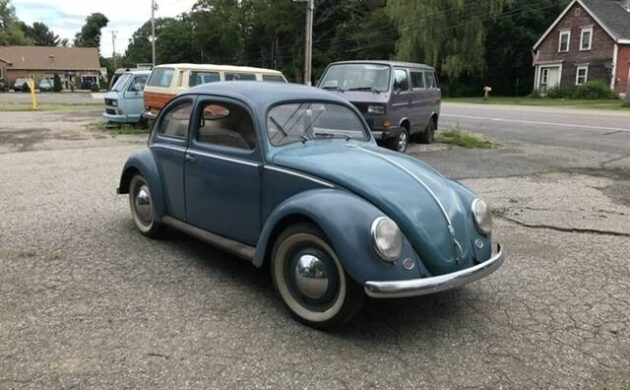
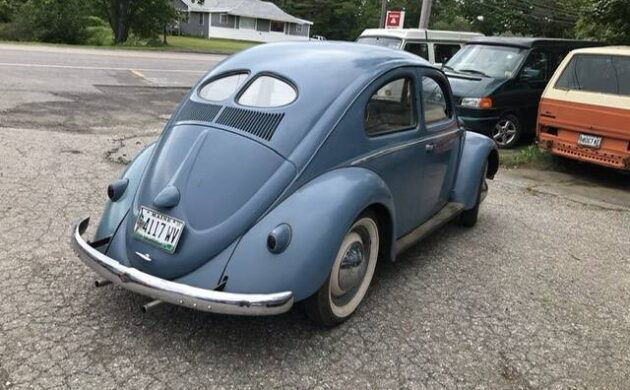
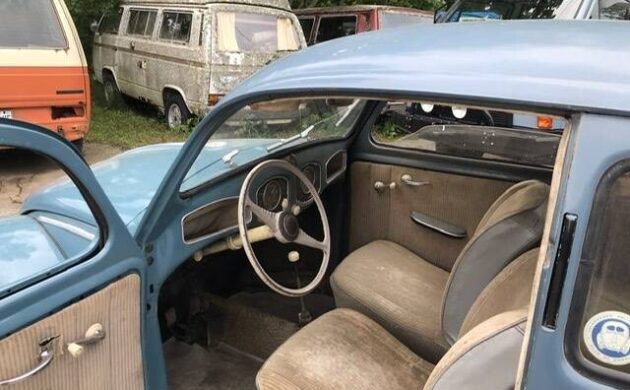
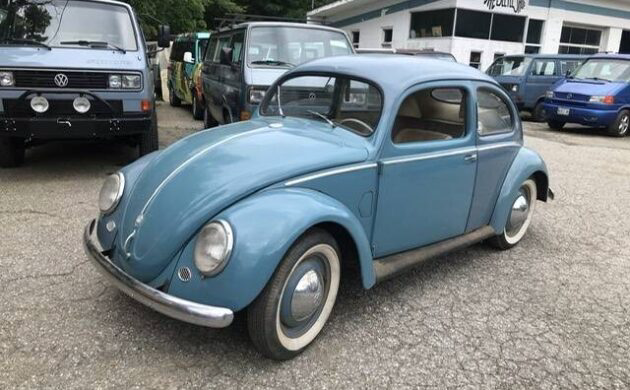

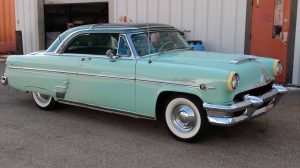

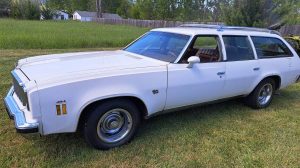


The split rear window is the one to own.
Now why does that sound familiar? . . . .
A lot of Vanagons and a 4×4 one too
Lots of incorrect parts.
Buy it. Drive it. Love it. Oh, and work on it yourself!
Where I come from, if you could afford a car, these were often the car.
Not any more.
Need more pics especially for the rust and the mill. Pricey but where u gonna find one? Good luck, sure is sweet. Just because you could buy them cheap, a lot of people dismissed them as another foreign POS, but just the opposite was true, good engineering and precision, made them a great little car.Cut my teeth on these. Did just about everything on these. Good luck and happy motoring. Wonder if the semaphores work??
Cheers
GPC
I’d buy this in heartbeat but I’m in Southern California. It it as far away in this country as it could be!! Shipping cars isn’t cheap anymore.
fly there and drive it home.. or pay me to do it for you.
This will sell fast.
A great uncle had a bug with the flip-up turn signals at the top of the door pillars. He and my father drove from Ft. Pierce FL to Columbus OH, and back, bouncing uncomfortably all the way (pre-freeways). I wonder what what those flip-ups would add to the price?!!
I guess I didn’t look closely, but the flip-up turn signals are there. It would be cool to show that feature in the pictures.
Nice, rare split window here but I do believe this is actually a 1951 model, The 1952 would have glass wind wings (first year), this listed car shows Vent Flaps that were added to the Beetle in 1951. (as seen in pic). Also, the Wolfsburg crest was added to hood above hood handle in 1951. One other thing the chrome garnish molding was added to the windshield in ’51. This is missing but most likely due to a replacement windshield sometime in the last 70 years.
for the record, they are not called “flip up turn signals”. They are semaphores, in the VW world.
Semaphores it is. Thank you. It still would add to the listing seeing them opened up.
Are those front fenders from a later bug? I thought VWs this early had the turn signal housings faired into the fenders.
Fenders are correct, the first year for the fender mounted turn indicators was 1955. Prior to that were the semaphore turn indicators. If the seller could supply the chassis number on this, it could clear up the confusion on exact year model.
1951 numbers would show 220,472–313,829. The 1952 model would be 313,830–428,156. The rear end on this is all 1952 from what I can tell. The front group not so much.
Further proof the front fenders are correct is that the small “grille openings” at the bottom of the fenders are round, not oval.
Poppy . . . and maybe others: the front fenders look to be correct. Since the turn signal function was taken over by the semaphores, there were no actual “turn signal lights” in the front fenders during the Split era. With the advent of the “Oval Era” (1953 to 1957) front signal lights were placed low on the fenders. As only the VW World can do, these turn signal lights are called “Bullet Lights”. BTW, and I have no idea if this is true for this particular car, but it would be “unusual” for the semaphores to be working. They were always touchy, and I doubt 70+ years has improved them any. But if they are there, they can be rebuilt.